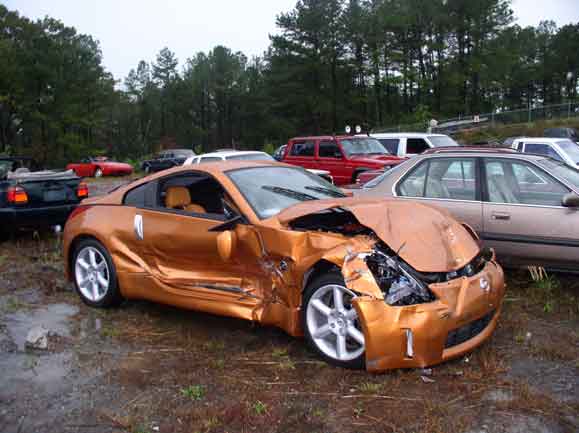How Wrecked Cars are Processed
The Life of a Junk Car
By Ben Silver - May 18, 2016
The salvage process is one that I am often questioned about. People seem to be curious about how salvage yards function. Since our salvage has been operating in Denver for nearly 40 years, I believe I can shed some light on the subject.
Â
Sourcing Vehicles
The procurement process is of paramount importance to automotive recyclers. Do it poorly, and you will suffer. Do it well, and you will thrive. We have a dedicated employee to this specific component of the process and we use the most cutting edge software available to aid him. This is the first step in the process, we have to get our “raw inventory†from somewhere before we can begin our salvage vehicle dismantling process. Insurance companies get vehicles from accidents that are considered a “total lossâ€. They then sell those vehicles through insurance auto auction. All of the junk vehicles and wrecked cars end up at 2-3 different salvage auctions. Bidders from across the world can bid on these wrecked cars and trucks, and whoever ponies up the most cash gets the salvage vehicle.
Â
Add Parts to Inventory
Now that the wrecked vehicles, junk cars, and totaled trucks have been acquired and are at our facility, we need to physically inventory the vehicle and it’s parts. We’ll actually assess the damage to every part that we put in stock and assign a grade to many of them to help our salespeople understand the condition of the part. Based on the value of the parts and our historical sales data, we’ll inventory the used parts with good value. We use a tablet to electronically enter the parts with descriptions into our yard management system. This allows our sales people to easily look up parts when they’re requested and access all the information about the vehicles and their parts. Once the parts are in our inventory, they’re broadcasted real time over the internet to hundreds of other salvage yards, shops, and even to the retail public on various websites.
Â
Disassembly Process
This is the heart of our manufacturing, disassembly, dismantling, process. We start by testing anything in wrecked car that we’re able to, emphasizing the more valuable components like the engine and transmission. Next we’ll systematically remove of all the fluids, gases, oils, etc., from the junk car in the most environmentally sound way possible. Finally, we’ll actually remove the engine, transmission, and core parts. Wrecked trucks are always the best for core product. The engine and transmission will be stocked in our warehouse so they can be delivered to our customers the day after they are ordered. The removal of the engine and transmission is key to removal of most other parts on the vehicle. Upon completion of the dismantling process, our lead dismantler will inspect the vehicles and verify that proper procedure has been applied and the vehicle is placed in a row in our yard.
Â
Selling Parts Off Wrecked Cars and trucks
Once the wrecked vehicle is dismantled, parts will begin to sell off the vehicles at a rather quick pace. We’re primarily a wholesale provider of used auto parts, so we take hundreds of calls a day from body shops, insurance companies, independent repair shops, and dealerships, and process there orders as quickly as possible. The parts are not 100% ready to be sold at the time we receive the order. Many need to be removed, inspected, and cleaned before they are sold. Through our yard management system, we create electronic work orders that prompt our production staff to pull the specific part that has been ordered.Â
Â
Removing Parts from Cars and Trucks
A work order is created that will route our parts pullers in the removal of all the correct parts. This is one of the final steps in the process, as the part that has been ordered will be removed from the junk vehicle or picked from the warehouse. The parts puller is responsible for doing basic quality control, pulling the correct part, marking, and tagging the part with the routing information.
 Â
Logistics
Now that the wrecked car has been processed, inventoried, and parts are selling, it is time to get the parts to one of our valuable customers. We will deliver many of parts to customers within our delivery zone and we freight or ship a fair percentage of our products out as well. We don’t do residential delivery and some shops opt to pick up there parts in store. We try to accommodate the needs of our customers as much as possible, and provide the product as quickly as we can.
Â
Crushing the Wrecked Vehicles
Everything must come to an end, even the beautiful if of car, truck, or SUV that was wrecked, considered a junk car, and now fully recycled! After a vehicle has spent it’s “useful life†at our yard, it’s time to put new inventory that was recently purchased in its place. In order to make room, we must “scrap†the vehicle and send it to be shredded and recycled. We will remove a final round of core products from the vehicle and move it into a large container to be hauled off to the recycler to be crushed and processed into metals. This is the final element of recycling the vehicle as it is returned to the raw material state from which it was originally built.
Â
That’s the nitty gritty on what happens everyday at our salvage yard. Sometimes it isn’t pretty but we have found this method to be environmentally friendly, efficient, and effective at providing quality used auto parts.Â
